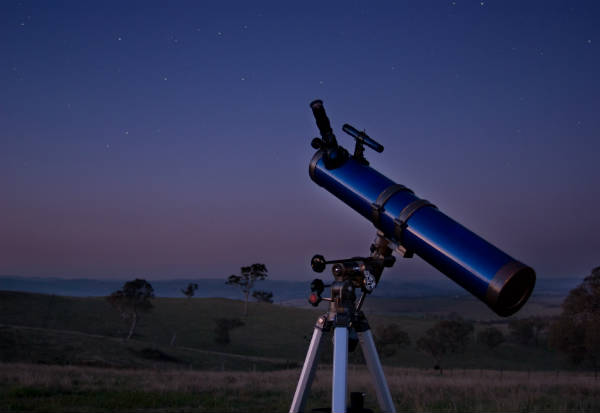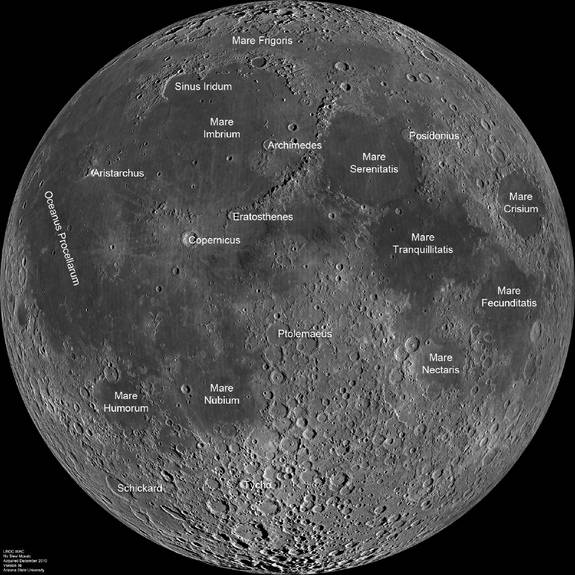So You Have a New Telescope…Now What?
 Ryan Wick, CC BY 2.0, via Wikimedia Commons
Ryan Wick, CC BY 2.0, via Wikimedia Commons
Did you get a new telescope for the holidays? If so, you may be wondering where to start. Check out our tips to setting up your telescope and where to begin on your journey of star gazing.
Congratulations! You are about to embark on the adventure of a lifetime with your new telescope. But as most first time telescope enthusiasts, you may be “in the dark” when it comes to knowing what to do and where to begin. We’ve made it easy for you by grabbing some useful tips from Alan MacRobert, a senior editor at Sky & Telescope magazine.
Step 1. Set up your telescope indoors: Before you do anything, assemble your telescope indoors according to the manufacturers guidelines. You will be happy you got to know this sometimes tricky piece of equipment in the comfort and warmth of your home, before embarking into the night. This includes knowing how to change lenses and any other “bells and whistles” your particular model may feature.
Step 2. Go out into the daylight: You may think this is counterproductive to what a telescope is intended for, but getting outside into the daytime is useful in so many ways. Aiming your focus at treetops and buildings gives you a sense of what your telescope can do and is much easier to focus in on a target in full light.

According to MacRobert he advises;
“You’ll find that its lowest magnification gives the brightest, sharpest, and widest views, and with the least amount of wiggles. It’s also much easier to find what you’re trying to aim at using the telescope’s lowest power. So that’s what you’ll always want to start off with. Switch to a higher power after you’ve found your target, got it centered, and had a good first look.”
He continues on to say; “Also, if the telescope has a little finder-scope on the side, daytime is the easiest time to align the finder-scope (using its adjustment screws), so that it points at the same distant treetop as the main telescope. Don’t try to figure out unfamiliar knobs, settings, and adjustments for the first time in the dark…”
Step 3. Have patience: spending time with the telescope is the best way to enjoy it for all it can do. However, be realistic as well. Some first time novices expect a Hubble-like quality view which just isn’t possible from most amateur telescopes. MacRobert reminds us that;
“most astronomical objects are very dim to the human eye. And our night vision sees almost everything as shades of gray. Much of what the universe has to offer is subtle, and of course extremely far away.”
First Time Viewing — the Moon
So you’ve gotten your telescope set up and you’v followed the tips from the experts, now what? Of course, you will want to start your sky gazing with something easy. Once again the experts lend their expertise and suggest the good ole moon.
This big bright satellite is one of the most visually fascinating (and easy to locate) objects in our solar system and great for even the smallest of telescopes to zoom in on, so why not start there?
NASA/GSFC/Arizona State University, Public domain, via Wikimedia Commons
Although, one may think the best time to observe the moon is when it is full, this is actually the worst time. Experts suggest taking a peak at this satellite two or three days after first quarter because;
- The moon is in a great position
- Most of the main features can be observed
- Not so bright as to lose the detail through glare.
- As the line of darkness recedes, features near the border stand out (the shadows become stronger and details are more easily seen)
Once again according to experts these moon-marks are actually easier to see through a small telescope with the general rule of thumb in regards to magnification being “50 power for each inch of aperture of your objective lens. So for example, you are using a 2.4-inch refracting telescope, the maximum magnification you should use is 120 power. If you have a 4-inch, reflecting telescope, the maximum magnification is 200 power…”
As you become more and more familiar with your telescope, you can branch out to view other objects and planets in our solar system. Learn exactly what your telescope can do, then get out there and take in all of what our Universe has to offer. You never know, you may just discover something no one else has…the possibilities are endless. Happy star gazing
